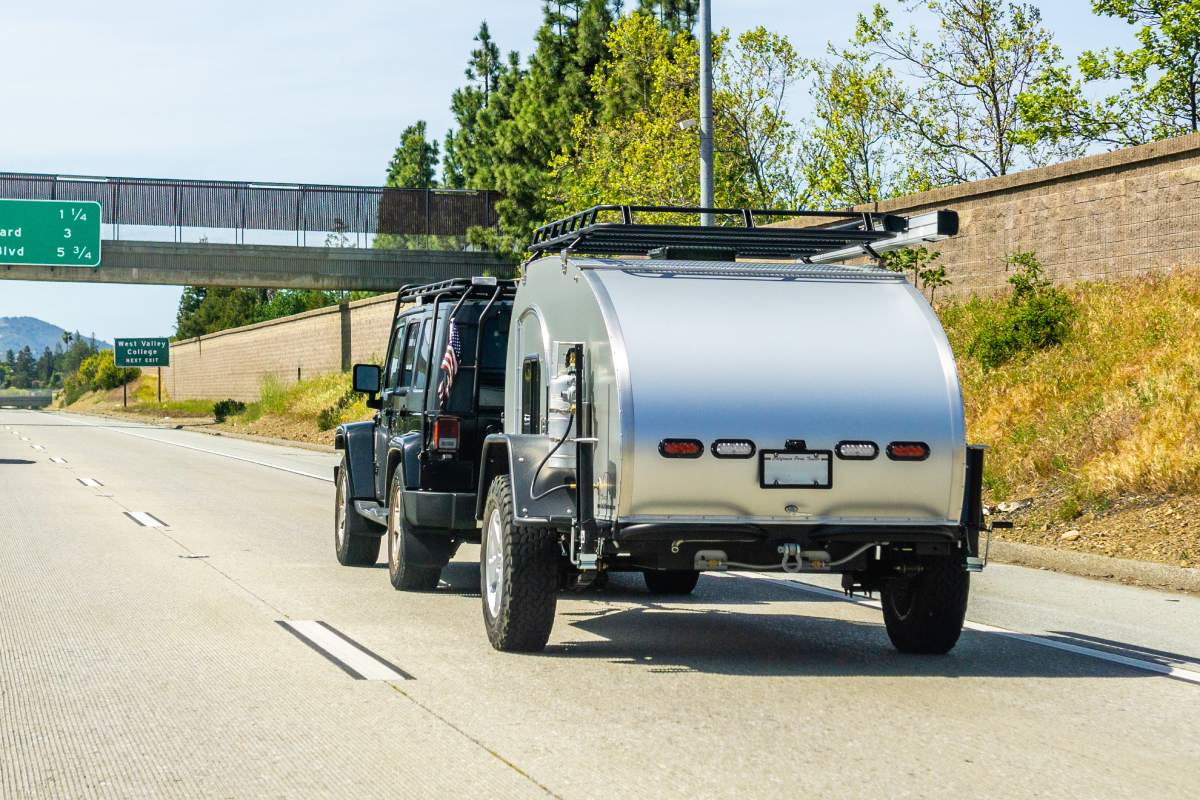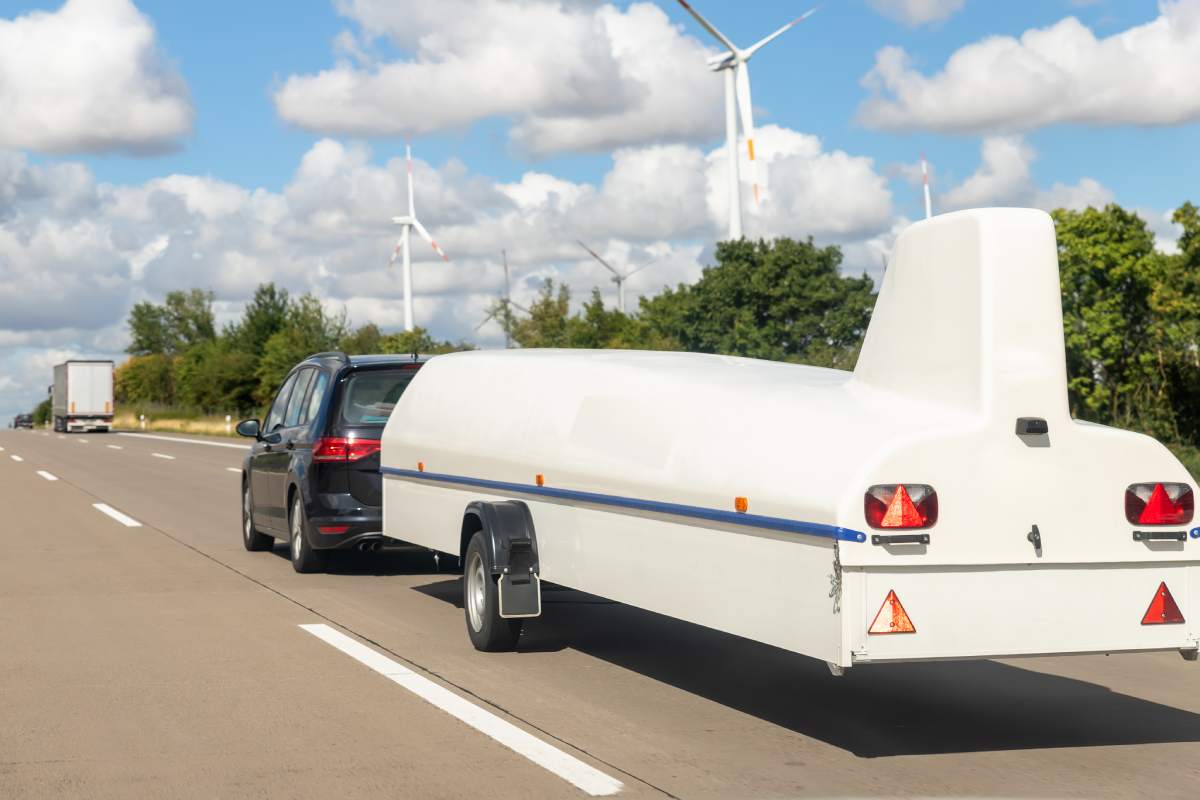When towing a trailer, two critical measurements ensure your setup is safe and effective: Aggregate Trailer Mass (ATM) and Gross Trailer Mass (GTM). While both terms relate to the weight of your trailer, they focus on different aspects of weight distribution and capacity.
Understanding these measurements is essential for safe towing, as they affect the performance of both your trailer and towing vehicle. In this article, we’ll break down the differences between ATM and GTM, explain their significance, and provide practical tips for managing these weights to ensure a safe and legal towing experience.
Understanding Aggregate Trailer Mass (ATM)
Aggregate Trailer Mass (ATM) is a key measurement for anyone who tows a trailer. It represents the total weight of your trailer when it’s fully loaded. Understanding ATM helps ensure that you tow your trailer safely and legally.
What is Aggregate Trailer Mass (ATM)?
ATM is the maximum weight your trailer can safely handle. It includes the combined weight of everything associated with the trailer, ensuring that it does not exceed the manufacturer’s specifications. This weight encompasses several components:
- The Trailer’s Own Weight (Tare Mass): This is the weight of the empty trailer. It’s important to know this because it forms the base weight to which you add your load.
- Payload: This includes everything you load into the trailer, such as machinery, equipment, tools, and any other items. The total weight of these items is added to the trailer’s tare mass.
- Tow Ball Weight: This is the weight that the trailer exerts on the hitch of your towing vehicle. It is a crucial part of ATM as it impacts the balance and handling of both the trailer and the towing vehicle.
Why is Keeping Within ATM Limits Important?
- Safety: Exceeding the ATM can make your trailer unstable, which increases the risk of accidents. Overloading can affect the trailer’s braking and handling, making it harder to control while driving.
- Wear and Tear: Overloading can put excessive strain on the trailer’s suspension and tyres, leading to quicker wear and potentially costly repairs.
- Legal Issues: There are legal limits on how much weight you can tow. If you exceed the ATM, you could face fines and penalties. Staying within the specified limits helps you comply with road safety regulations and avoid legal troubles.
How to Manage ATM
- Check the Manufacturer’s Specifications: Always refer to the manufacturer’s guidelines for the maximum ATM. This information is usually found in the trailer’s manual or on a compliance plate attached to the trailer.
- Weigh Your Load: Regularly weigh your trailer with its load to ensure you stay within the ATM. This is especially important if you frequently change the items you transport.
- Balance Your Load: Properly distribute the load to ensure the trailer’s weight is evenly spread. This helps maintain stability and improves handling.
- Regular Maintenance: Keep your trailer in good condition. Regular checks on tyres, suspension, and the hitch will help ensure that your trailer remains safe to use within its ATM limits.
Understanding and sticking to the Aggregate Trailer Mass not only ensures a safer towing journey but also shields your trailer from undue strain and keeps you within the law. Remember to keep an eye on the total weight you’re pulling and adjust accordingly to remain within the safe threshold.

Understanding Gross Trailer Mass (GTM)
Gross Trailer Mass (GTM) is an important measure when it comes to towing a trailer. It tells you how much weight is pressing down on your trailer’s axles, excluding the weight that’s carried by the tow truck. In simple terms, GTM is the total weight of the trailer and its contents that directly impacts the trailer’s wheels.
What is Gross Trailer Mass (GTM)?
GTM refers to the weight supported by the trailer’s axles. It includes the weight of the trailer itself and everything loaded onto it. However, it does not include the weight that rests on the tow ball of the towing vehicle. This is different from Aggregate Trailer Mass (ATM), which includes the tow ball weight as well.
Here’s a breakdown of what’s included in GTM:
- The Trailer’s Weight: This is the weight of the empty trailer. It is the base measurement that you add the load to.
- Payload: This encompasses all the items you load onto the trailer, including cargo, equipment, and any other goods.
- Axle Weight: GTM specifically measures the weight borne by the trailer’s axles. It does not account for the weight that is transferred to the tow vehicle via the hitch.
Why is GTM Important?
- Axle and Tire Safety: Each trailer is designed with a maximum weight limit that its axles and tires can handle. If you exceed this limit, you risk overloading the axles and tyres. This can lead to tyre blowouts, axle damage, and compromised braking performance.
- Performance and Stability: Properly managing your GTM helps ensure that your trailer handles well and maintains stability while on the road. Overloading can cause your trailer to sway or become difficult to control, which increases the risk of accidents.
- Durability: Adhering to GTM limits helps prevent excessive wear and tear on your trailer’s components. Overloading can lead to premature failures of the axles and tyres, which can be costly to repair.
- Safety Compliance: Keeping within GTM limits is not just about safety; it’s also a legal requirement. Many regions have regulations that specify the maximum allowable weight for trailers, and exceeding these limits can result in fines and penalties.
How to Manage GTM
- Check Manufacturer Specifications: Always refer to your trailer’s manual or compliance plate to find the maximum GTM. This information is crucial for understanding how much weight your trailer can safely carry.
- Weigh Your Trailer: Before hitting the road, weigh your trailer with its load to ensure it doesn’t exceed the GTM. This can be done at truck stops or weigh stations.
- Distribute Weight Evenly: Properly distribute your load across the trailer to ensure that the weight is evenly spread across the axles. This helps maintain balance and improves handling.
- Regular Maintenance: Keep your trailer’s axles and tyres in good condition through regular maintenance. Check for signs of wear and address any issues promptly.
Understanding and sticking to the Gross Trailer Mass (GTM) limits is crucial for making sure your trailer runs smoothly and safely. It helps protect your trailer from damage, ensures better performance on the road, and keeps you on the right side of safety regulations. Always keep GTM in mind when loading and towing your trailer to ensure a safe and hassle-free journey.

Key Differences Between ATM and GTM
When towing a trailer, two important measurements to be aware of are Aggregate Trailer Mass (ATM) and Gross Trailer Mass (GTM). Understanding these terms can help you ensure safe and efficient towing. Here’s a simple comparison to help you grasp the differences:
Scope of Measurement
- ATM (Aggregate Trailer Mass): This measurement represents the total weight of the trailer when it’s fully loaded. It includes everything inside the trailer, like cargo and equipment, plus the weight exerted on the tow ball of your towing vehicle. Essentially, ATM accounts for the full weight that your vehicle and trailer combination will handle.
- GTM (Gross Trailer Mass): GTM focuses specifically on the weight supported by the trailer’s axles. It does not include the weight that presses down on the tow ball. In other words, GTM measures only the weight that’s directly on the trailer’s wheels, not affecting the towing vehicle’s load.
Purpose
- ATM: The purpose of ATM is to ensure that the total weight of your trailer, including its contents and the weight on the tow ball, is within the safe limits set by the trailer manufacturer. This helps prevent overloading of the towing vehicle and maintains safe driving conditions.
- GTM: GTM ensures that the load carried by the trailer’s axles does not exceed the specified limits. This is crucial for preventing overloading of the trailer’s axles and tyres, which can lead to issues such as tyre blowouts and axle damage.
Impact on Towing Vehicle
- ATM: Since ATM includes the weight on the tow ball, it affects both the trailer and the towing vehicle. An incorrect ATM can impact the handling and braking of both the trailer and the towing vehicle, potentially leading to unsafe driving conditions.
- GTM: GTM primarily concerns the health of the trailer’s axles and tyres. While it does not directly affect the towing vehicle, maintaining proper GTM is essential for ensuring that the trailer’s components are not overburdened, which in turn contributes to overall towing safety.
Remembering the Difference
To easily remember the difference between ATM and GTM, use these simple mnemonics:
- ATM = “A” for All and “M” for Max: ATM represents All the weight (trailer and load) and is the Max permissible weight. It’s a comprehensive measure that includes everything associated with the trailer.
- GTM = “G” for Ground: GTM focuses on the weight Grounded by the trailer’s axles. It excludes the tow ball download and specifically addresses the load that impacts the trailer’s wheels.
Why Understanding ATM and GTM is Important
Understanding both ATM and GTM is crucial for several reasons:
- Stay Safe: Knowing and adhering to these limits helps avoid dangerous driving conditions. Overloading a trailer can impair braking, handling, and stability, making it harder to control your vehicle and trailer.
- Stay Legal: Complying with ATM and GTM limits ensures you avoid fines and penalties. Many regions have specific regulations regarding trailer weight, and staying within these limits keeps you on the right side of the law.
- Extend Lifespan: Following the weight limits helps prolong the life of your vehicle and trailer. Properly managing ATM and GTM reduces strain on your trailer’s components, leading to lower maintenance costs and fewer repairs.
In Summary
Aggregate Trailer Mass (ATM) and Gross Trailer Mass (GTM) are key measurements for managing the weight of your trailer and ensuring safe towing practices. While ATM encompasses the total weight of the trailer, including the tow ball load, GTM focuses on the weight supported by the trailer’s axles.
Understanding and adhering to both measurements helps maintain optimal performance, prevents damage, and ensures compliance with legal requirements.
For quality equipment and reliable solutions, consider SureWeld.com, Australia’s leading supplier of aluminium loading ramps and aluminium plant trailers.







